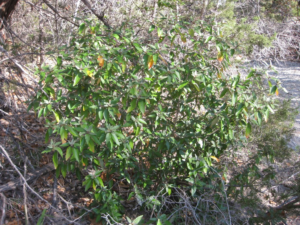Alabama croton
go.ncsu.edu/readext?645121
en Español / em Português
El inglés es el idioma de control de esta página. En la medida en que haya algún conflicto entre la traducción al inglés y la traducción, el inglés prevalece.
Al hacer clic en el enlace de traducción se activa un servicio de traducción gratuito para convertir la página al español. Al igual que con cualquier traducción por Internet, la conversión no es sensible al contexto y puede que no traduzca el texto en su significado original. NC State Extension no garantiza la exactitud del texto traducido. Por favor, tenga en cuenta que algunas aplicaciones y/o servicios pueden no funcionar como se espera cuando se traducen.
Português
Inglês é o idioma de controle desta página. Na medida que haja algum conflito entre o texto original em Inglês e a tradução, o Inglês prevalece.
Ao clicar no link de tradução, um serviço gratuito de tradução será ativado para converter a página para o Português. Como em qualquer tradução pela internet, a conversão não é sensivel ao contexto e pode não ocorrer a tradução para o significado orginal. O serviço de Extensão da Carolina do Norte (NC State Extension) não garante a exatidão do texto traduzido. Por favor, observe que algumas funções ou serviços podem não funcionar como esperado após a tradução.
English
English is the controlling language of this page. To the extent there is any conflict between the English text and the translation, English controls.
Clicking on the translation link activates a free translation service to convert the page to Spanish. As with any Internet translation, the conversion is not context-sensitive and may not translate the text to its original meaning. NC State Extension does not guarantee the accuracy of the translated text. Please note that some applications and/or services may not function as expected when translated.
Collapse ▲ Alabama croton (Croton alabamensis) is a southeastern native that is rare in the wild and also difficult to find in plant nurseries. But it’s worth the quest. It is a loose, open, semi-deciduous shrub, reaching around 6 feet in height with a spreading, mounding habit.
Alabama croton (Croton alabamensis) is a southeastern native that is rare in the wild and also difficult to find in plant nurseries. But it’s worth the quest. It is a loose, open, semi-deciduous shrub, reaching around 6 feet in height with a spreading, mounding habit.
The foliage is bright-green above and silvery below, with the older leaves turning a showy pumpkin-orange in the fall. The foliage is also quite fragrant, described as resembling apples or bananas. The small, yellow-green flowers are similar to those of poinsettia (minus the large colorful bracts), and both plants belong to the spurge family (Euphorbiaceae).
Other shared characteristics include milky sap and relative immunity from deer damage. Alabama croton tolerates some degree of neglect and dryness, but semi-shade with moist but well-drained organic soils are optimal conditions. Your biggest challenge in cultivating this plant will be keeping more aggressive shrubs and vines from overgrowing it.
—Tom Glasgow


